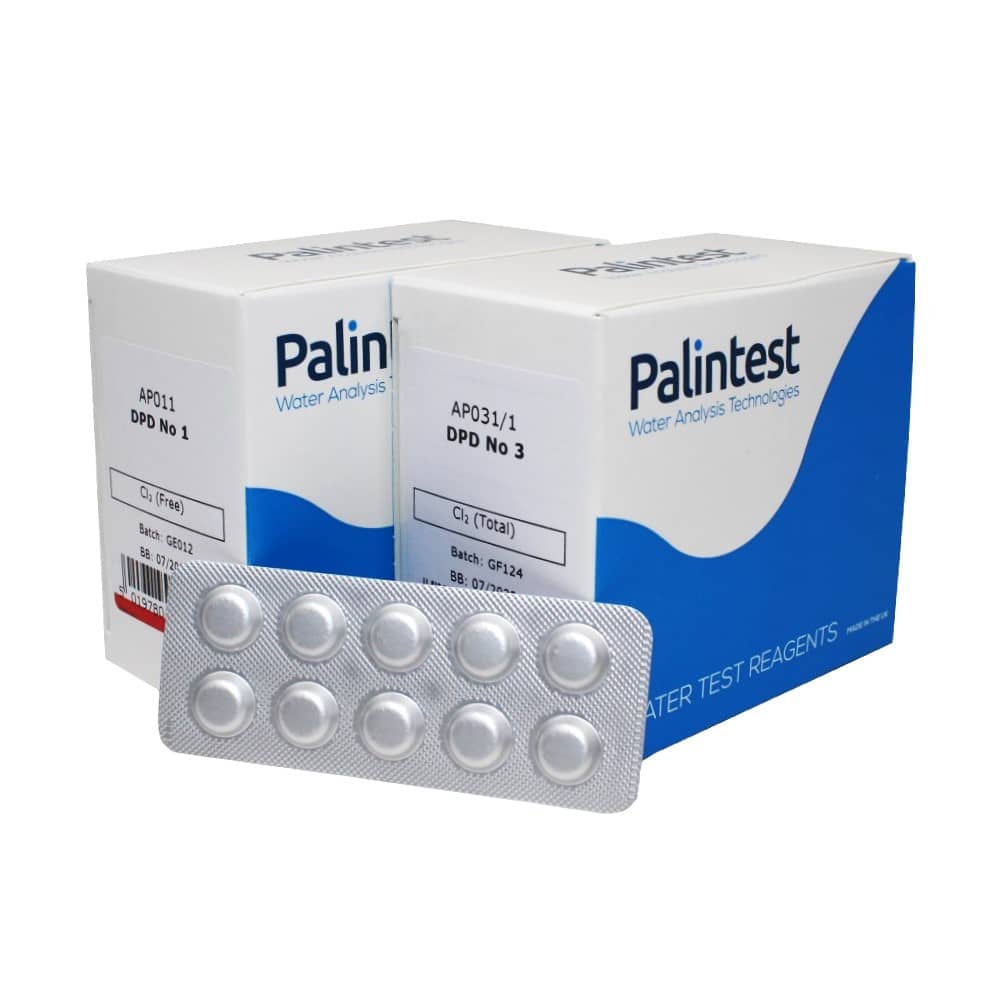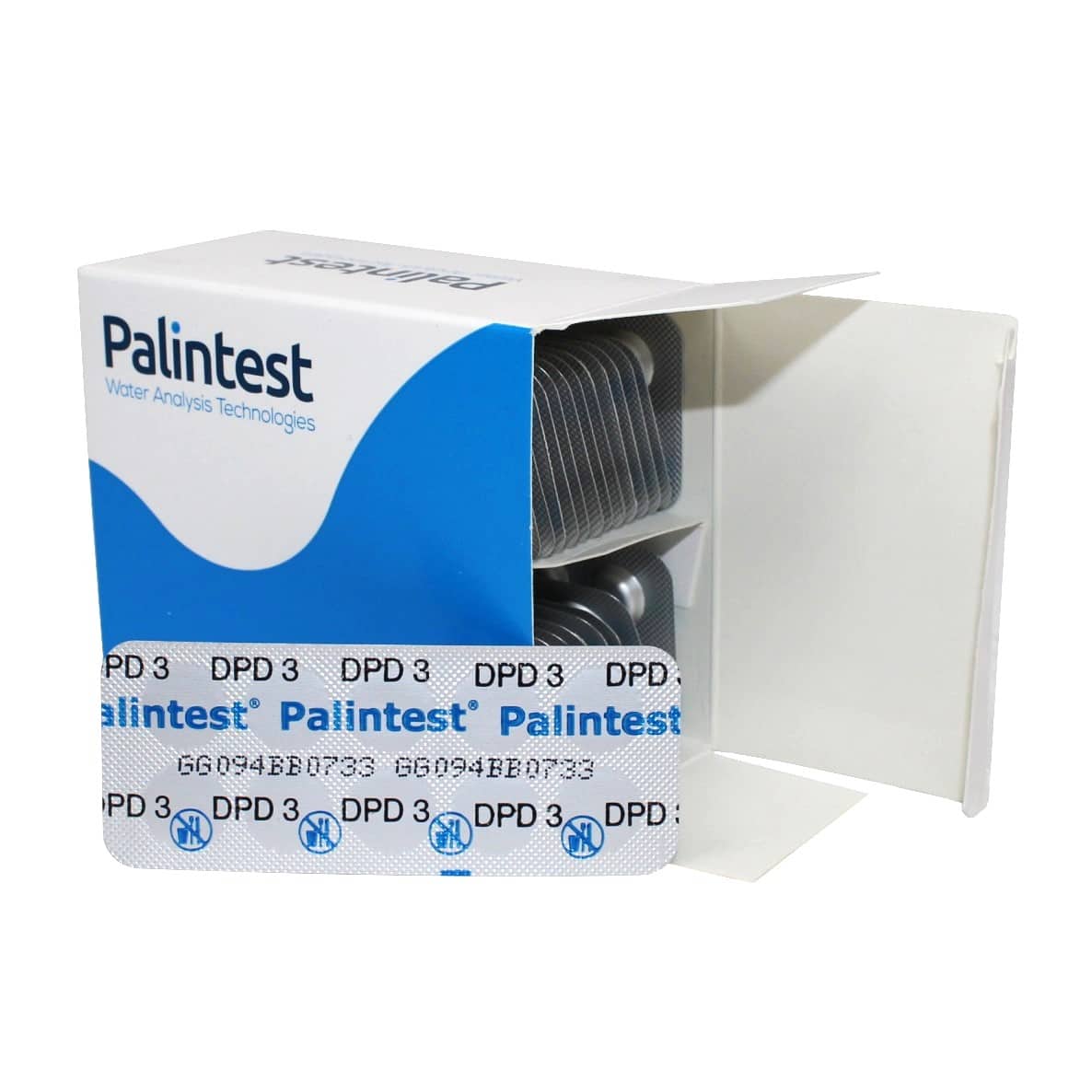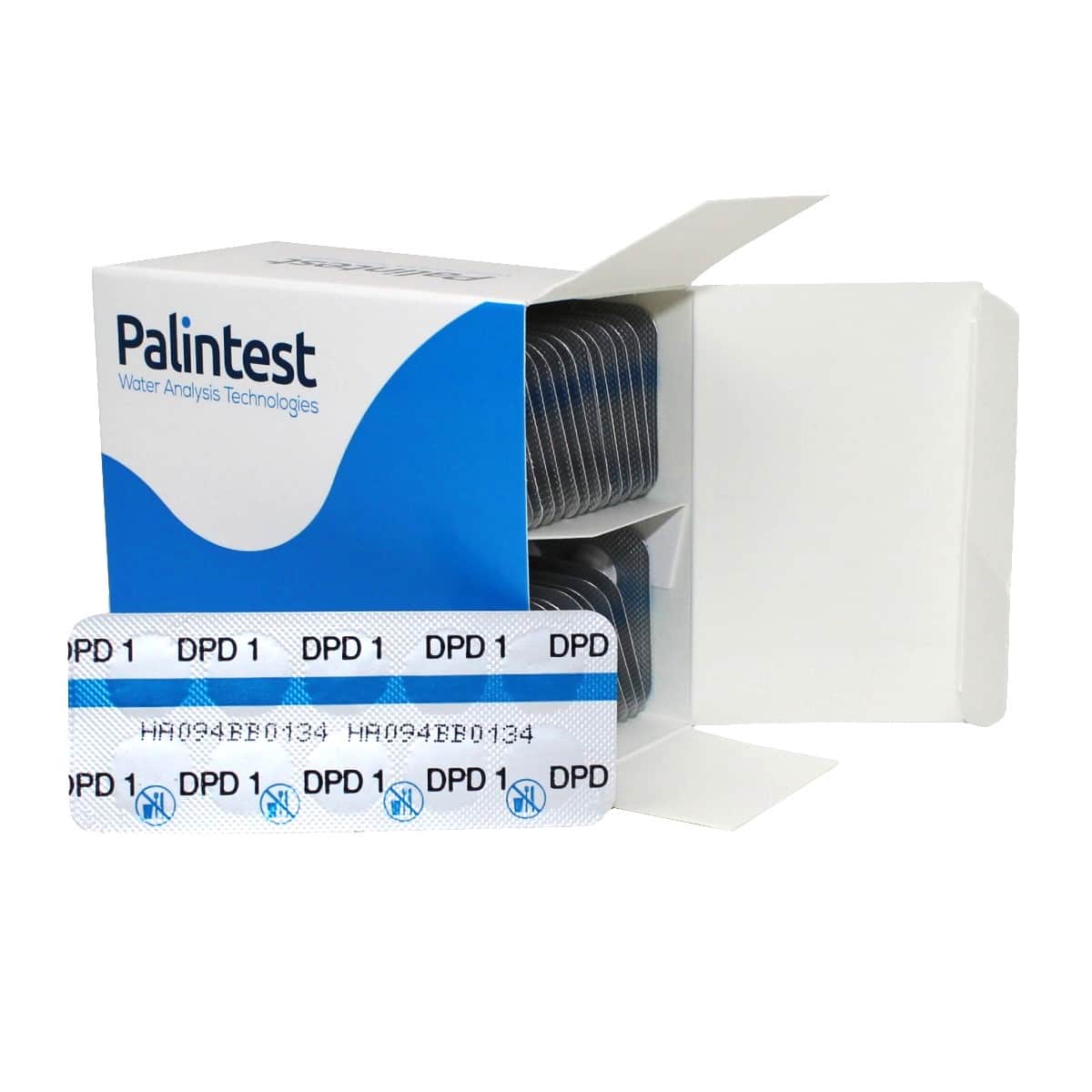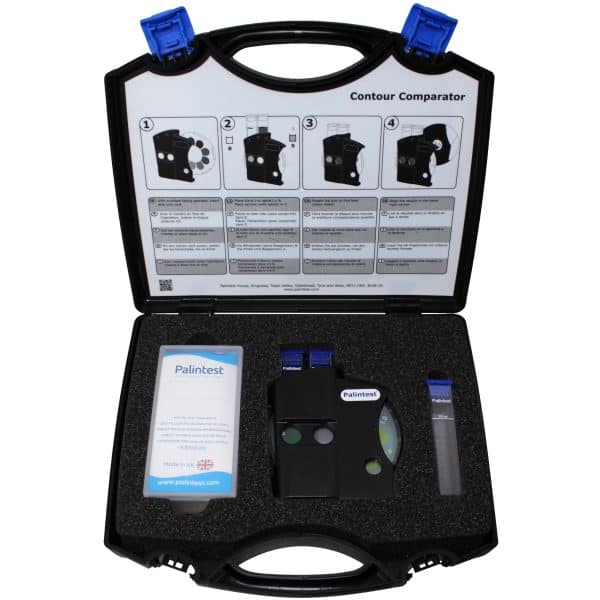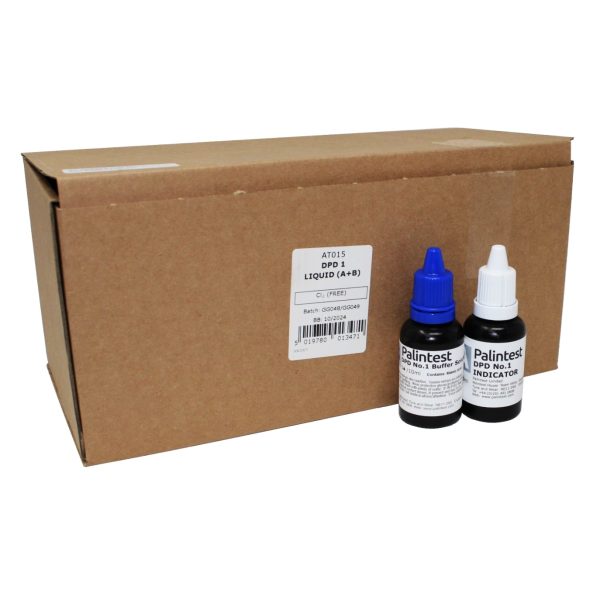Description
Pool operators need to be confident that the pool disinfectant is correctly dosed and controlled.
Disinfection of swimming pools is usually achieved using chlorine. Adequate free chorine is required to prevent infections.
The well-established DPD method is the test procedure of choice for free, total and combined chlorine as well as bromine and ozone, due to its consistency and reliability.
Using DPD reagents in tablet form is the easiest way to test using DPD. There are four main DPD tablets which can be used when measuring chlorine or alternative disinfectants (such as bromine and ozone).
- DPD 1 measures free available chlorine
- DPD 2 (use with DPD 1) measures combined chlorine
- DPD 3 (use with DPD 1) measures total chlorine
- DPD 4 measures total available chlorine
Chlorine is used as a primary disinfectant because of its effectiveness in killing potentially harmful organisms. It forms hypochlorous acid in the pool water. The effectiveness of this is influenced by the other chemicals that are in the pool, primarily pH and the amount of bather waste.
Hypochlorous acid that has not reacted with bather waste is free chlorine and must be carefully monitored to guarantee a safe pool.
Hypochlorous acid that reacts with bather waste forms combined chlorine which is a less effective disinfectant than free chlorine. High levels of combined chlorine can also cause eye and nose irritation and an unpleasant smell. Combined chlorine results from the reaction between ammonia-based compounds from the bather waste and chlorine to form monochloramine, then dichloramine.
To measure combined chlorine only, you need to subtract the value for total available chlorine (using DPD 3) from the value for free chlorine (using DPD 1).

